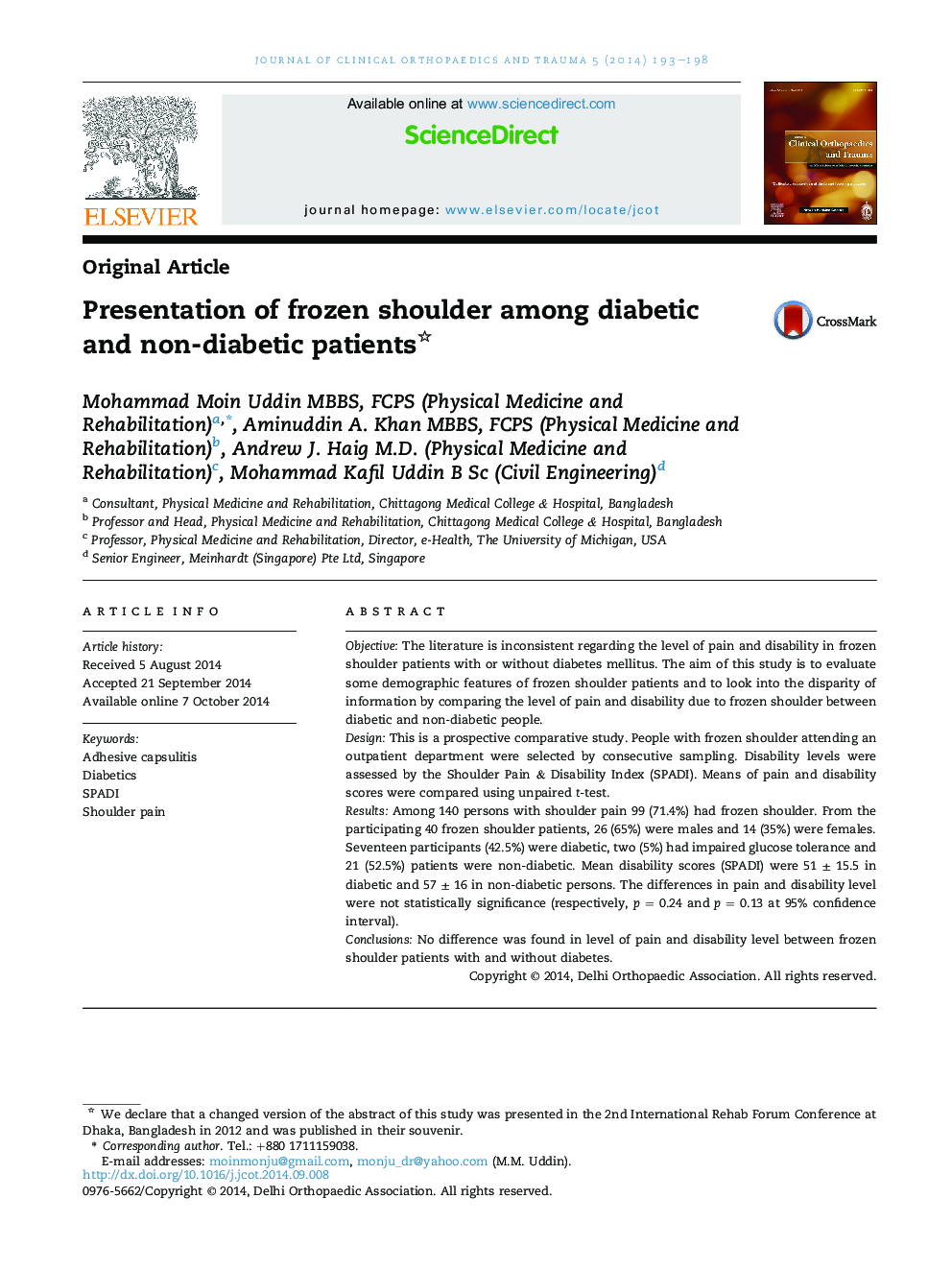| Article ID | Journal | Published Year | Pages | File Type |
|---|---|---|---|---|
| 3245425 | Journal of Clinical Orthopaedics and Trauma | 2014 | 6 Pages |
ObjectiveThe literature is inconsistent regarding the level of pain and disability in frozen shoulder patients with or without diabetes mellitus. The aim of this study is to evaluate some demographic features of frozen shoulder patients and to look into the disparity of information by comparing the level of pain and disability due to frozen shoulder between diabetic and non-diabetic people.DesignThis is a prospective comparative study. People with frozen shoulder attending an outpatient department were selected by consecutive sampling. Disability levels were assessed by the Shoulder Pain & Disability Index (SPADI). Means of pain and disability scores were compared using unpaired t-test.ResultsAmong 140 persons with shoulder pain 99 (71.4%) had frozen shoulder. From the participating 40 frozen shoulder patients, 26 (65%) were males and 14 (35%) were females. Seventeen participants (42.5%) were diabetic, two (5%) had impaired glucose tolerance and 21 (52.5%) patients were non-diabetic. Mean disability scores (SPADI) were 51 ± 15.5 in diabetic and 57 ± 16 in non-diabetic persons. The differences in pain and disability level were not statistically significance (respectively, p = 0.24 and p = 0.13 at 95% confidence interval).ConclusionsNo difference was found in level of pain and disability level between frozen shoulder patients with and without diabetes.
